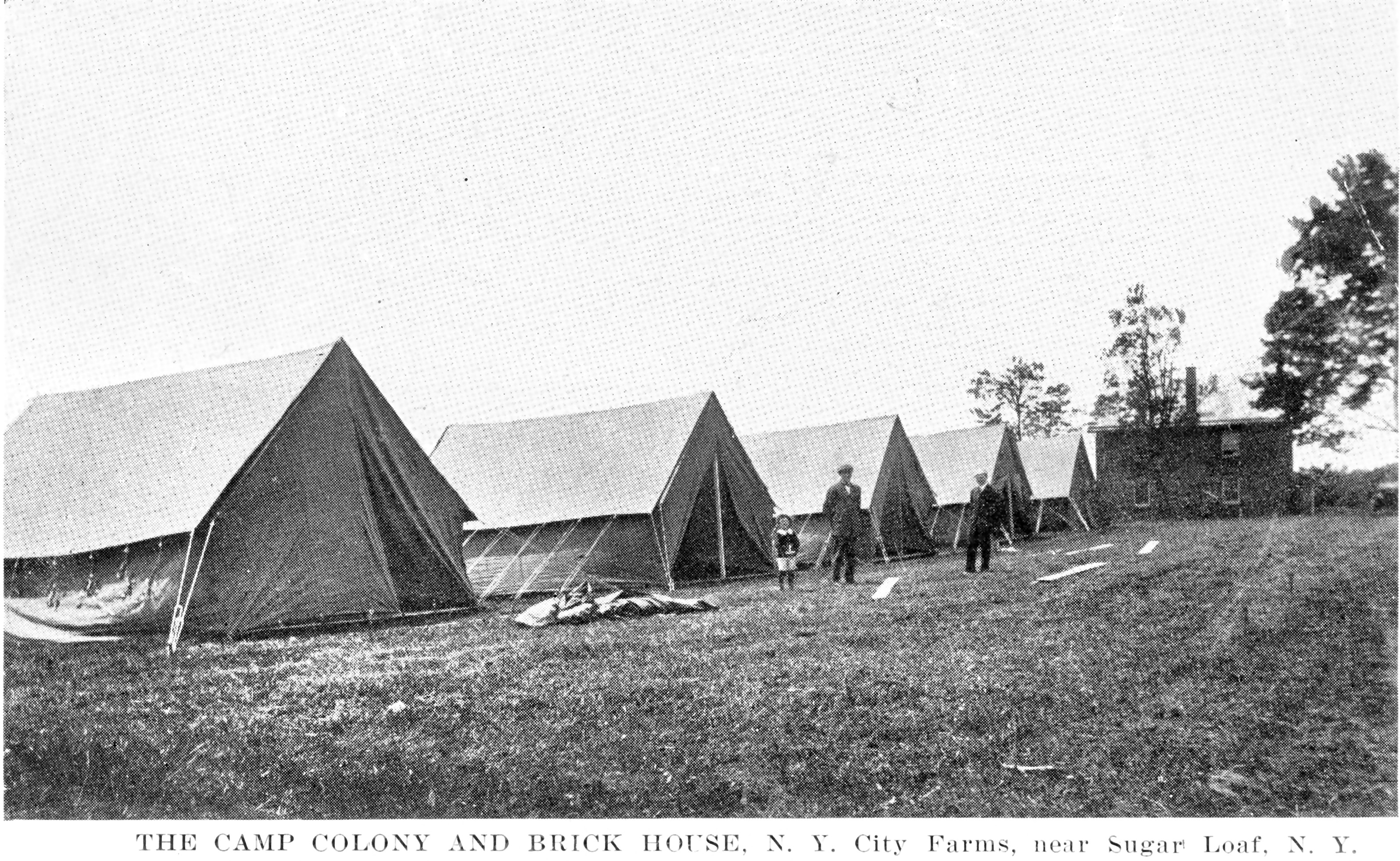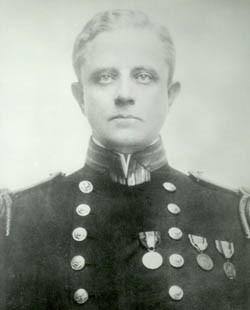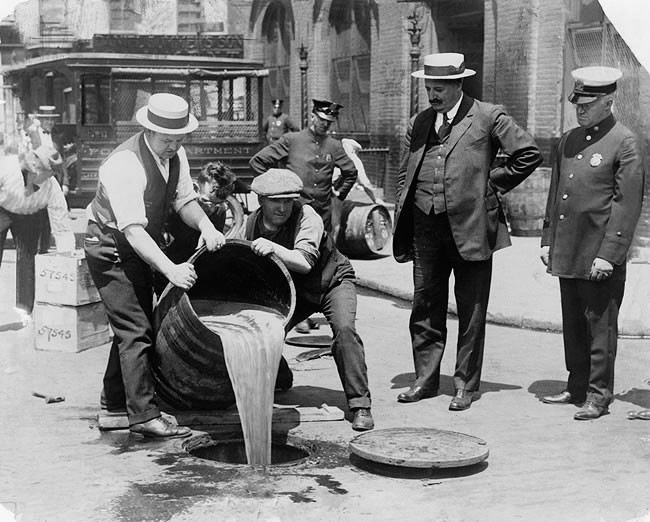
Few realize today that the practice of housing inmates in need of rehabilitation at this property actually began in the summer of 1912, when New York City purchased the Durland Farm. Mayor William Gaynor of New York City visited that in August to check the site for a new "colony" for men addicted to alcohol to be erected by the City at a cost of one million dollars. They had just purchased the Wisner-Durland farm at Wickham Lake for this purpose from Thomas Durland Landon.
The inebriates' colony was dubbed "The New York City Farm" (1), and was one of the very first substance abuse facilities in the country. It was operated under the auspices of the New York City Board of Inebriety, which later became a branch of the Department of Correction. It appears to have suffered from a lack of operation funding and bureaucratic red tape until 1914, when army tents were erected and the first inmates moved in. An article in The Survey describes the early days, when the men were housed in tents and shacks and moved into the Manor house during the winter.
The Annual Report of the State Board of Charities for 1916 describes the operation:
"The New York City Farm is an institution for the custody and care of inebriates and drug addicts, the latter class forming a slight majority of the 100 inmates. Considerable progress has been made both in regard to temporary equipment and permanent plans, while practically all the inmates are now committed cases. An appropriation has been secured and plans drawn up for the first permanent building. The farm buildings and equipment have been made more adequate and the fire protection improved to some extent. The permanent plant should be completed as soon as possible. The water supply should be improved by the construction of reservoirs and the installation of new pumps, a cement floor should be laid and power equipment provided in the laundry. This institution in plan and purpose is unique among the public institutions of New York City, and is still in large measure an experiment, but the results thus far seem sufficiently promising to warrant its continuance." (2)
The Farm was the site of ground-breaking treatment programs for alcohol and drugs. Developed by the facility's medical director, Dr. Charles F. Stokes, former Surgeon General of the United States, one of the "quick cure" treatments was described in the New York Times on Jan. 28, 1917.
The City appears to have become discouraged with the operation of the facility the following year however, and the project was ended in the fall of 1918. That November, Congress had passed the temporary Wartime Prohibition Act, a measure that was intended to reserve the nation's grain resources for the war effort (in actuality, passage of the Act occured after Armistice Day, proving that procrastination until it's too late is a long standing Washington tradition), to take effect by mid-year.
By the fall of 1919, the 'permanent' Prohibition Act had made the sale of alcoholic beverages illegal. Little wonder that those in political power decided that since there would be no alcohol, there would be no more need for treatment of inebriates, as politicians are perennially optimistic about the effects of their actions. The New York City Farm was shut down.
By the following spring advocates of substance abuse treatment were lobbying for the reopening of the facility to focus more on drug abuse cases, than alcoholism, and it appears to have continued operating until around 1929, under ownership of the New York City Department of Correction.
Notes:
1. There were other institutions at different time periods which used this name.
2. Annual Report of the State Board of Charities for 1916, p. 234. Accessed on Google Books: http://books.google.com/books?id=6P8qAAAAYAAJ&dq=%22new%20york%20city%20farm%22%20%2Bwarwick&pg=PA234#v=onepage&q=%22new%20york%20city%20farm%22%20+warwick&f=false

History of the Mid-Orange Correctional Facility:
The New York City Farm
at Warwick
Epidemic alcoholism lead to the establishment of the New York City Farm, and an overly optimistic prediction of the effects of Prohibition lead to its demise.
Uncredited photo
The Camp Colony of the New York City Farm showing tents the inmates were housed in.
Photo courtesy of Phil Simms.
Admiral Charles Francis Stokes. Photo from Findagrave.com contributor Bob Hufford.
WARWICK VALLEY HISTORY, NY



The New York Times January 28, 1917
DRUG ADDICTS CURED BY NEW TREATMENT
Dr. Charles F. Stokes, former Surgeon General of the United States and a specialist in the treatment of drug victims, who is now Director of the New York City Inebriate Farm, has been testing a new cure for drug addiction with excellent results, according to letters received by Chief Magistrate McAdoo and Justice Frederic Kernochan of the Court of Special Sessions.
The letters request that as many drug addicts as possible, the worst cases preferred, be sent to the City Inebriate Farm at Warwick Farms , Orange County, where Dr. Stokes is carrying on the work. Members of the Board of Inebriety have received word that the treatment, which Dr. Stokes has been working on a long time, has been used now on twentyfive patients and has been in every case successful. The cure is said to cause no suffering and to remove the acute effects of long use of drugs within two or three days.
One of the reported cures is that of a man addicted for seven years to morphine, who was brought to Warwick Farms in a state of collapse. About fortyeight hours later, it is said, he was able to walk. Within a few days, it was said, the treatment was broken off without inconvenience to the patient and even without his knowledge. Other methods take from ten to twentyone days to destroy the craving for drugs.
While it was formerly necessary to give a preliminary treatment to sufferers from drugs at a hospital in this city before they were sent to Warwick Farms to have the treatment continued and to be rebuilt physically. It is now asked that they be sent to that institution without delay. In some cases men have gained ten pounds in a week immediately after being received at the farm. To restore their general health and rebuild their physical efficiency, they are kept at the farm for sixty days, however.
Because of the simplicity and short duration of the new treatment it has been found possible, without additions to the nursing staff, to handle an increased number of drug addicts there. There is now on the farm one nurse, and a housekeeper who acts as nurse.
One of the main features of the new treatment, if its success is established, will be the saving of money in treating drug victims. This is now a costly process because of the long period of nursing required. Large nursing staffs are kept at the three city institutions for drug addicts. A request will be made for the establishment of a receiving station for the victims, so they can be sent to Warwick Farms with as little delay as possible.
Dr. Stokes said over the telephone from Warwick Farms last night that he would have nothing to say on the subject until a great many cases had been observed and that he would then report to the medical profession.
Webpage by S. Gardner 2011 for Albert Wisner Public Library.
Please be polite and request permission for commercial use or before
copying this content to another site or publication.
